The Caspian Sea is a large saltwater lake -the largest in the world- of 371,000 square kilometers and an average depth of 170 meters, which is fed by several rivers, the most important of which is the Volga. All this gives it a strategic situation, acting as a common natural border between Russia, Azerbaijan, Iran, Turkmenistan and Kazakhstan, which reveals a historical importance that is reflected, for example, in the episode that we are going to see next:the incursions of the Rus by its shores.
We have already talked about them in other articles, such as the one dedicated to the Rurikida dynasty of kyiv. They were Varangian Vikings, a people of Scandinavian origin who, thanks to river incursions through the channels that flow into the Baltic, entered by land and reached the Black Sea, settling in Eastern Europe by founding in the ninth century a settlement next to Lake Ladoga called Village.
This conversion to a sedentary lifestyle did not exclude them from continuing with new expeditions, the first being of a commercial nature and establishing relations of this type with the Muslims and the Byzantine Empire through the Volga and the Dnieper respectively.
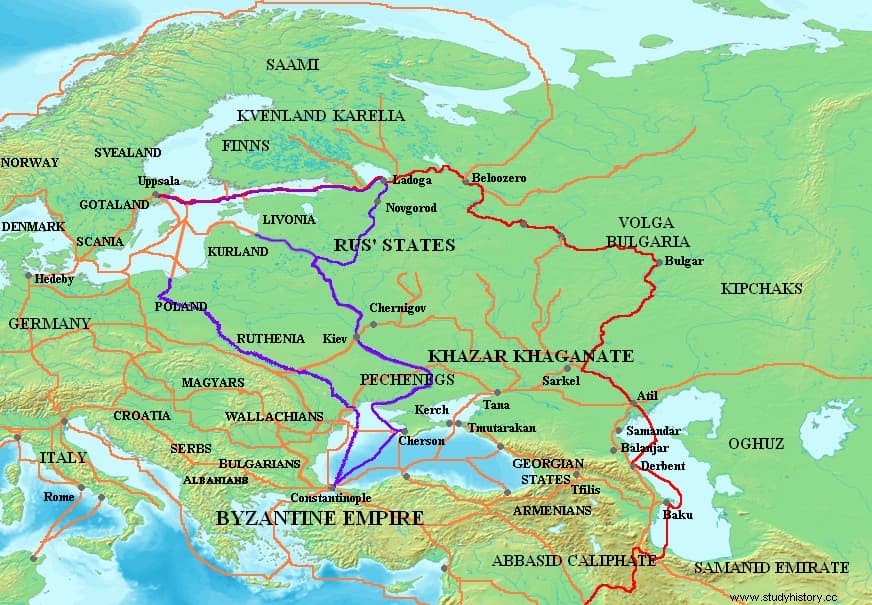
Skins, slaves and honey were the products they exchanged, sometimes in places as far away as Baghdad, according to the numismatic record and some documentary sources such as the work Kitab al-w'al Masalik-Mamalik (Book of routes and kingdoms , by the Persian geographer and official Ibn Khordadbeh), where they are cited as "relatives of the saqualiba «, that is, of the Slavs, a term that encompassed any Norse (on the other hand, some translators think that it would simply refer to slaves, something that would derive from the fact that they used slaves as interpreters). But from the year 913 he radically changed the nature of his travels to become warlike.
In fact, it was not the first time that they recovered their custom of razias warriors, since it is known that they made three previously:the first to Abaskun during the reign of Hasan ibn Zaid, lord of the Iranian region of Tabaristan; another to the same city between 909 and 910; and one more between 911 and 912. What happens is that they were minor incursions, with small fleets of fifteen ships. On the other hand, for the 913 one, half a thousand were gathered, establishing the southern coast of the Caspian as the objective again. But, given the size of the expedition, they now needed to stop at intermediate ports and so they established an alliance passing through those of the Khazarian khanate.
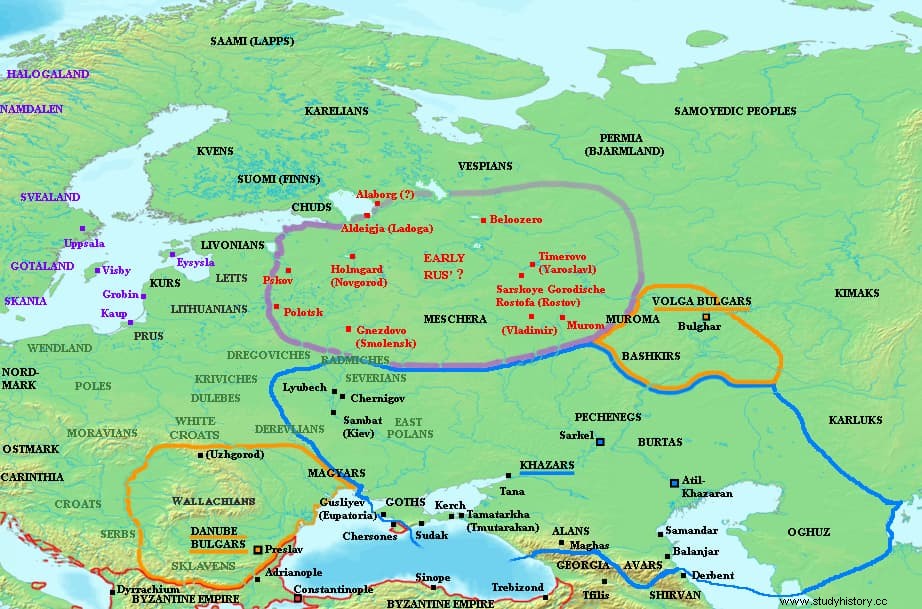
The Khazars were a Turkic people from Central Asia, a confederation of nomadic tribes who in the late 6th century created a major trading empire between Eastern Europe and Southwest Asia, a crossroads between China, the Middle East and Kievan Rus' , as well as between the Byzantine Empire and the Umayyad Caliphate, as well as a fundamental station on the Silk Road. Its territory extended from the northern Caspian to the northwestern Black Sea, bordering Bulgaria on the Danube and the Volga and including the Crimean peninsula and the area between the two bodies of water up to the Abbasid border.
Initially they accepted the proposal of the Rus in exchange for half of the loot they obtained and, thus, the fleet sailed through the Dnieper to the Black Sea and then to the Azov and the Don River. Then, following the Viking custom, they put the ships ashore and thus transported them to the Caspian, where they continued the plunder through the Iranian region of Gorgan without the success of the Persian attempts to repel them.
They conquered the Azerbaijani cities of Baku, Arran, Beliakan and Shirvan, depredating and capturing slaves of all ages, reaching their bad fame to such an extent that the Khazars themselves began to distrust them and, during their return, they preventively annihilated them with the help of the Bulgarians. of the Volga.
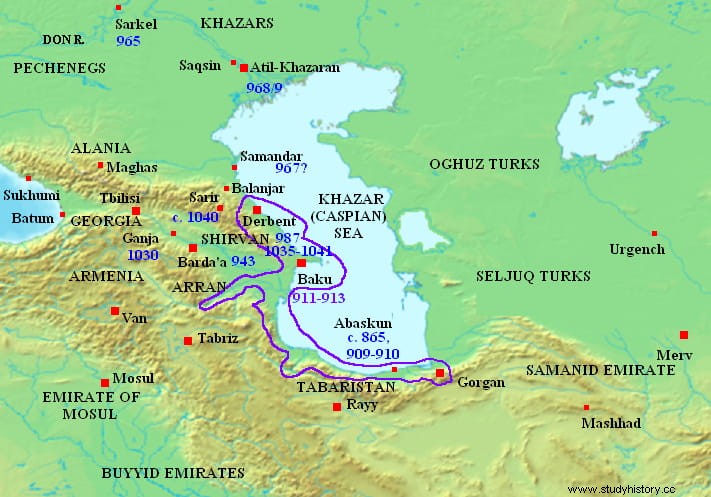
This brought a few decades of peace, but in 943 the Grand Prince of Kievan Rus', Igor, assembled a new fleet for another raid. On that occasion they went up the Kurá River, which rises in the southern Caucasus and flows east through Turkey, Georgia and Azerbaijan until it empties into the Caspian Sea, and once again they conquered and plundered. They took the city of Barda and in it they wiped out almost the entire population, after the inhabitants rebelled and refused to leave their homes, using it as a base of operations after managing to restore tranquility with the promise of respecting the local religion and customs. .
However, an epidemic of dysentery broke out that caused heavy casualties, prompting the Khazarian troops in the region to fall on the city. The Rus went out to fight with their leader at the front mounted on a donkey; Possibly it was Prince Oleg of Novgorod, who some authors identify as Igor's firstborn, although others believe that he was Helgu (another notable who two years earlier had unsuccessfully tried to storm Constantinople) or even the Sveneid chief. In any case, they were defeated and lost hundreds of men, being forced to entrench themselves behind the walls and being subjected to a siege. Unable to resist, they loaded up as much loot as they could and left the city at night, managing to reach the Kurá and embarking for home.
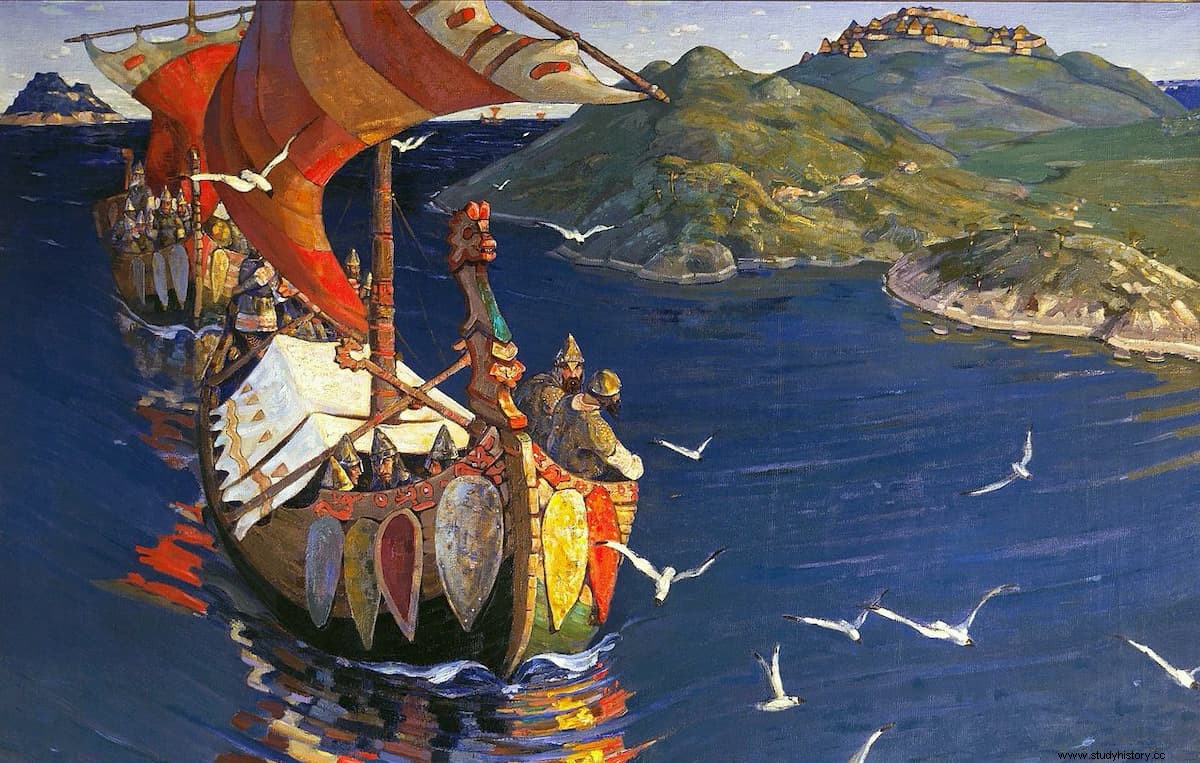
It is possible that the Khazars were incited by the Byzantines to fight the Varangians to put an end to their growing control of the trade routes, although there are also those who reverse this approach:Roman Emperor I Lekapenos would have encouraged the Varangians -and the Alans- to attack the Khazars after they killed many Christians in retaliation for the persecution of Jews in the empire (the Khazarian elites embraced Judaism in the 8th century and considered themselves descendants of Japheth, the son of Noah). In any case, the Rus were vetoed their passage to the Volga for that campaign due to misgivings, given recent history.
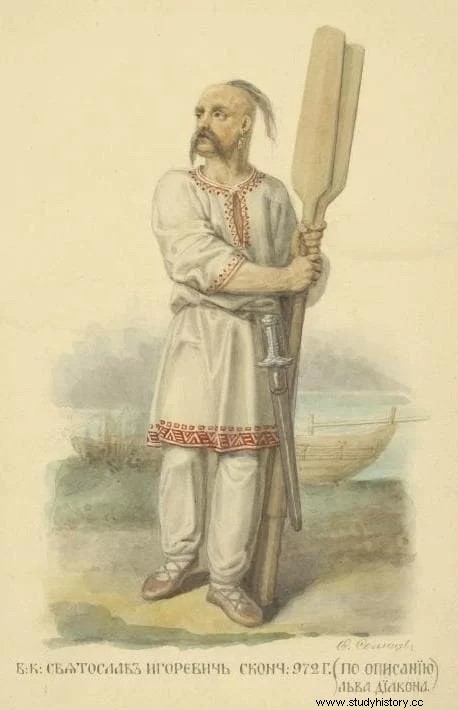
In this way, Yosef ben Aaron, a Khazarian leader, decided to unite his forces with those of the Muslim states against what they considered a common enemy. The move went wrong for him because in 965 he met a formidable rival:Sviatoslav I, Prince of Novgorod and Grand Prince of kyiv. He was another son of Igor who started an expansion of the Rus by absorbing the vassal tribes of the Khazars and turning them into his tributaries. He then hired Pechenegs (the nomadic Turks of the steppes) and Oguces (the Turks who inhabited between the Black and Caspian seas) mercenaries to make up for his inferiority in cavalry and started the war.
Moving along the Oka and other tributaries of the Volga, he invaded eastern Bulgarian territory demanding submission to the sites he conquered and succeeding in bringing the entire upper reaches of the river under his control. That same year - the chronology is unclear - he took the city of Sarkel (on the left bank of the Don, near present-day Rostov) and destroyed his fortress, which had been built by the Khazars with Byzantine help, establishing the principality of Belaya Viezha.
He also sacked Kerch (a Crimean city) and, between 968 and 969, Atil (the Khazarian capital, where a chronicler left it said that "he left neither grape nor bunch, not a single leaf on his branch" ). Then it was Samandar's turn, after which, as the Muslim chronicler Muḥammad Abū'l-Qāsim Ibn Ḥawqal wrote in his work Ṣūrat al-'Arḍ (The face of the Earth ), the Varangians headed for Al-Andalus.
Sviatoslav put an end to the independence of the Khazarian state and turned the situation around, becoming Kievan Rus' that dominated the trade routes of that part of the continent. Of course, it cost him his life:according to the Néstor Chronicle in 972 he was ambushed by Pechenegs and his leader, the Kurya khan, made a cup out of his skull. This did not prevent him from following the raid policy, sometimes of his own accord and others on behalf of others. An example of the latter would be the expedition of 987, in which the Rus sent an army aboard eighteen ships to the aid of the emir of Derbent (now the Russian republic of Dagestan), to confront various local tribes.
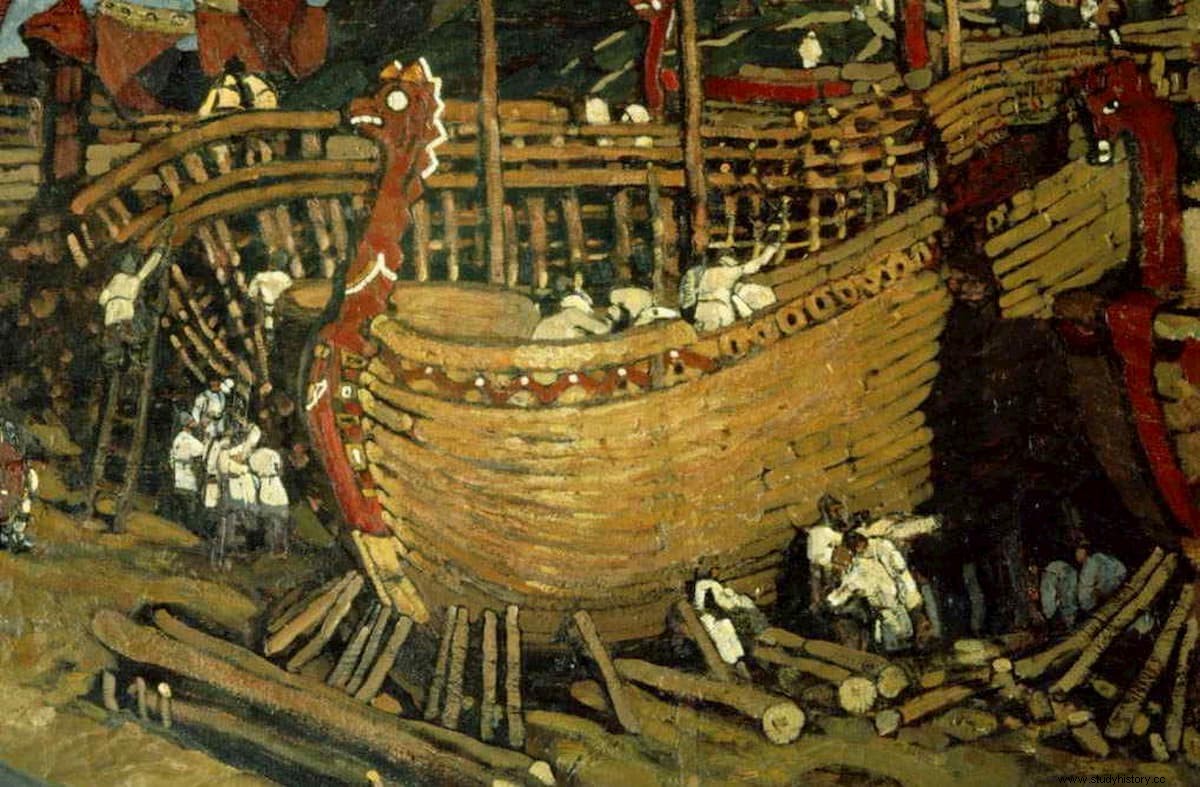
Instead, in 1030 the Rus' invaded Shirvan (a region of present-day Azerbaijan) and militarily assisted the lord of Ganja in putting down a rebellion. Two years later they repeated accompanied by alanos and sarires, but were defeated by the Muslims. There were also other later missions:one on behalf of the oguces; another as allies of the Georgians against the Byzantines (1041), although in this case it would not be Varangians but Vikings from Sweden who came to Serkland (the name they gave to the Abbasid Caliphate and, by extension, to the Muslim world), dying in the effort his boss, Ingvar the Traveler .
The last known raid took place between the years 1173 and 1174, when seventy-three ships fell on Shirvan. There are authors who believe that it would not be Rus but river pirates, who acted on their own and, it is believed, could be the origin of the Cossacks. The fact is that this attack was made in alliance with the Cumans (a nomadic tribe from the north of the Black Sea) and the local leader, Akhsitan, had to ask the king of Georgia, George III, and the Byzantine emperor, Andronicus I Comnenus for help. , thanks to which he was able to repel the invaders. These, however, had little time left; the Mongols would end Kievan Rus' in 1240.
